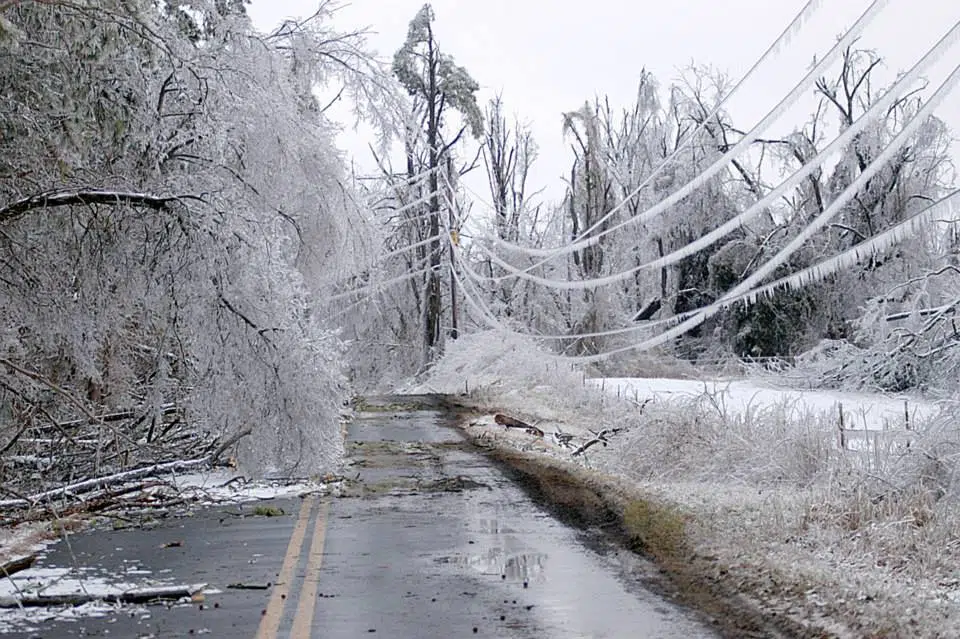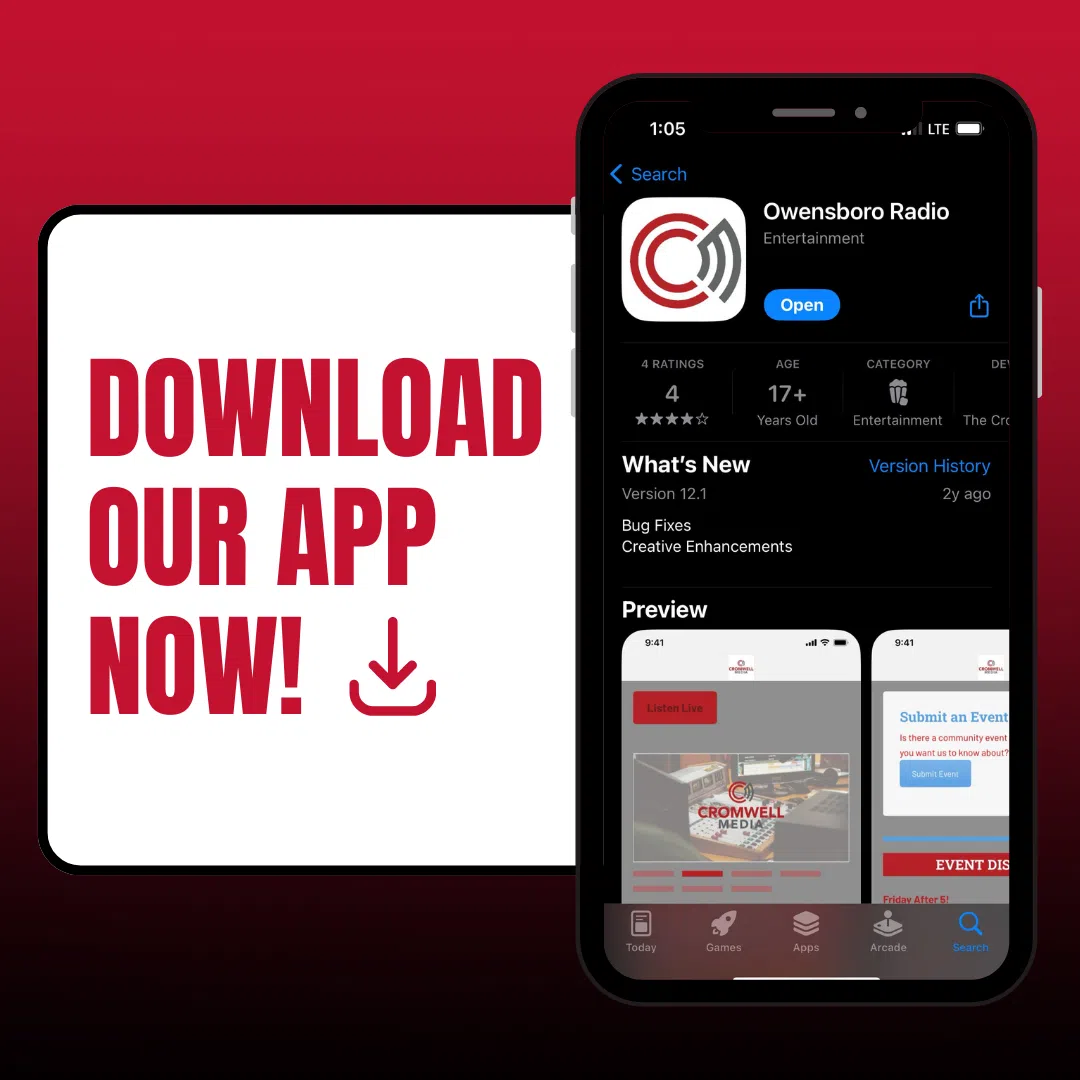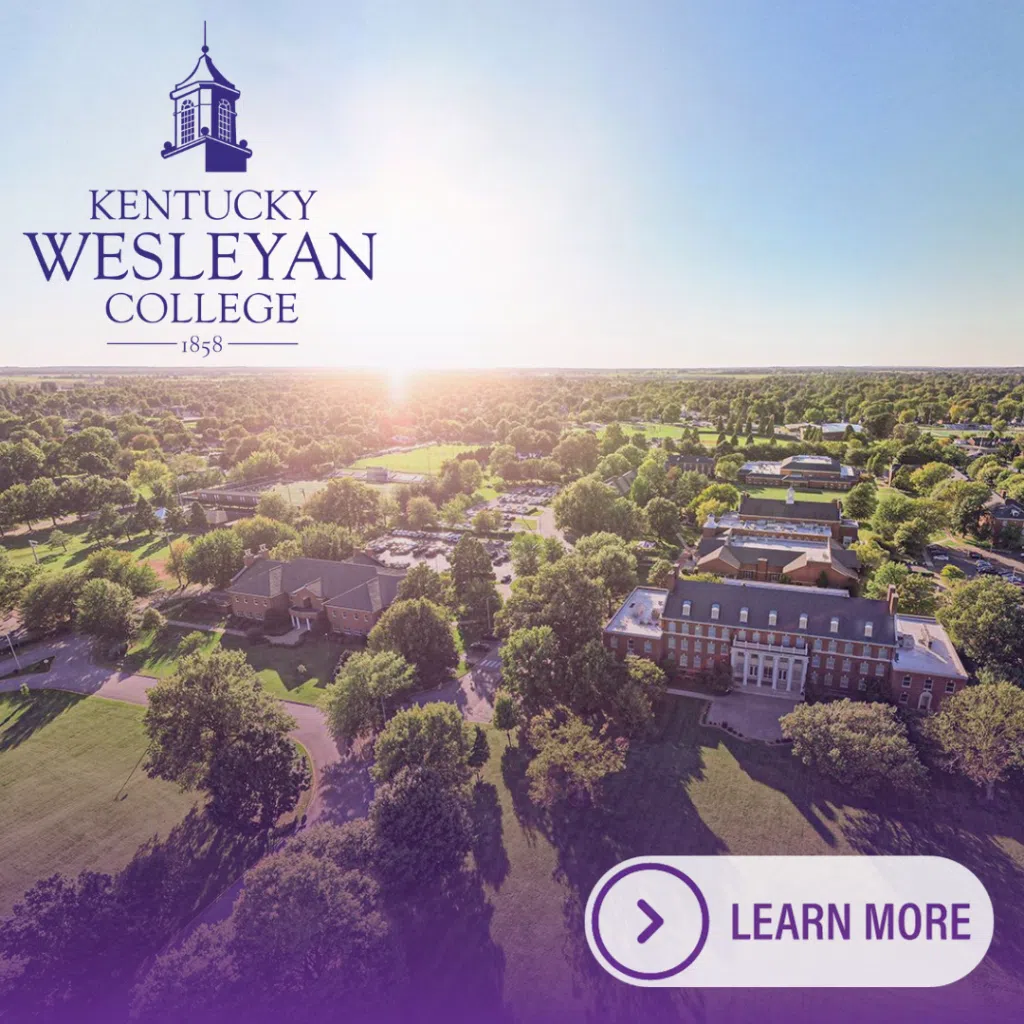
Today, I was chatting with Rob Nichols here at the radio ranch that the anniversary of the 2009 ice storm that hit our region is this weekend (January 26th-28th to be exact). It was then we realized that this is the tenth anniversary of the storm!
A wintry mix moved into southern Indiana and central Kentucky on the night of Monday, January 26, 2009. The ice storm impacted parts of Oklahoma, Arkansas, Missouri, Illinois, Indiana, Ohio, West Virginia, and Kentucky. Precipitation began as light freezing drizzle and freezing rain over the entire area, but changed to sleet and then snow overnight into the early morning hours of Tuesday across southern Indiana and northern Kentucky.
On Tuesday the 27th, precipitation changed to freezing rain over southern Indiana and northern Kentucky, and to rain over southern Kentucky. Ice over an inch thick was reported in many locations from the freezing rain.
The storm caused Kentucky’s largest power outage on record, with 609,000 homes and businesses without power across the state, including 100,000 without power for over one week. I personally remember some going longer than that!
Sadly, this ice storm killed 65 people nationwide, 35 in Kentucky.
I found a few pictures on the Messenger-Inquirer’s Facebook page.
I remember the entire storm as if it was last year! I was covering the morning shift here at the radio station. I remember specifically recalling what it was like driving to work that morning. Power lines were down all over. I recall the sounds of limbs breaking and popping. The erie sounds of electric transformers exploding all around. Visibility was almost non-existent. I remember driving my truck through tree limbs hanging over College Drive near Kentucky Wesleyan College because I couldn’t see them until it was too late. It was then I knew that it was not a “normal” snowstorm.
It was that morning that the long hours began for all of us at the radio station(s). We were just about the only means of communication for the community for almost two days. We became a conduit of information between the needs of the community and resources that were available. What seemed simple to us at the time, saved lives. Telling listeners where kerosene was available for heating. Where warming shelters were available. I remember getting a call from an elderly woman who could not get out, had no food or means of heating. I passed that information on the air and within the hour people came to her aid.
That’s probably what I remember the most during the storm; how people rallied together to help each other. We went from the daily hustle and bustle of our lives to simply helping everyone survive. So many sacrificed many countless days, no just hours, to get our electricity back. To keep us safe. Roads cleared. Yes it was a tough time, but leaned on each other and became stronger as a result.










